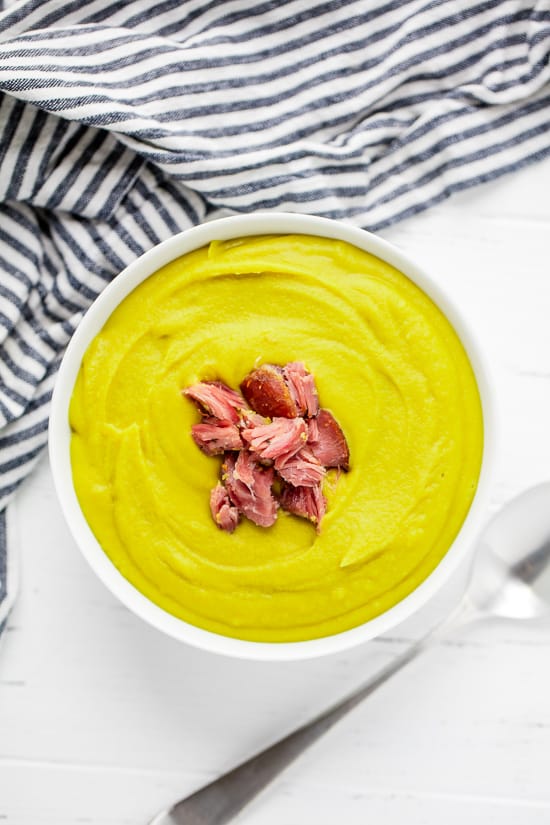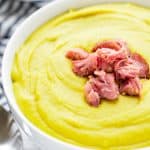Split Pea Soup is a popular American traditional soup that originates in New England. It is generally eaten as a smooth puree, though you can sometimes find it chunky style with whole bits of vegetables. Ham is a popular addition to the vegetable and pea soup base. The color of split pea soup varies between yellow and green, depending on the variety of split peas used. Split peas are a dried pea that can be found bagged, in the dry food section of your supermarket. They should be located somewhere near the dried beans and lentils. Be sure to continue reading for tips, tricks, and frequently asked questions that will help you make this classic soup a favorite in your household.
Why do they call it split pea soup?
Split pea soup is made from dried split peas so it is named after the main ingredient. Split peas are called such because of the process used to preserve them. They are peeled, dried, and split.
Is split pea soup good for you?
Why yes, yes it is! Split pea soup is full of fiber and is a nutrient dense soup. It’s also high in potassium and vitamin K. You can monitor the sodium level in this soup by using a low sodium chicken broth.
Do split peas need to be soaked before cooking?
No. Split peas, like lentils, do not need to be soaked before cooking. Beans require soaking prior to cooking, but because these are peas they can be used directly in the recipe. It is still a good idea to rinse your peas thoroughly before cooking to remove any dirt particles. Ham is an optional part of split pea soup, but can be added in various forms. This recipe utilizes ham hocks. If you can’t find ham hocks or don’t like ham hocks, you can substitute diced ham instead. Simply add in the diced ham after pureeing your soup. Return the soup to a simmer to allow the ham to heat through. The ham can also be omitted entirely for a vegetarian option. FREEZER INSTRUCTIONS: This soup can easily be frozen. Cool the soup completely and then ladle into plastic freezer bags, or freezer safe containers for storage. I personally like to put mine in gallon sized ziploc bags. I try to guess the amount of servings I will need for the size of my family and divide it into appropriate portions. Label the bag with the serving size and date, then lay out flat to freeze. To reheat, simply thaw and bring to a simmer in a saucepan. Placing a lid on the pot of frozen soup will help it thaw and heat through faster. Watch the video below where I walk you through every step of this recipe. You can find my complete collection of cooking show videos on YouTube, or right here on my website with their corresponding recipes. Δ Δ





![]()